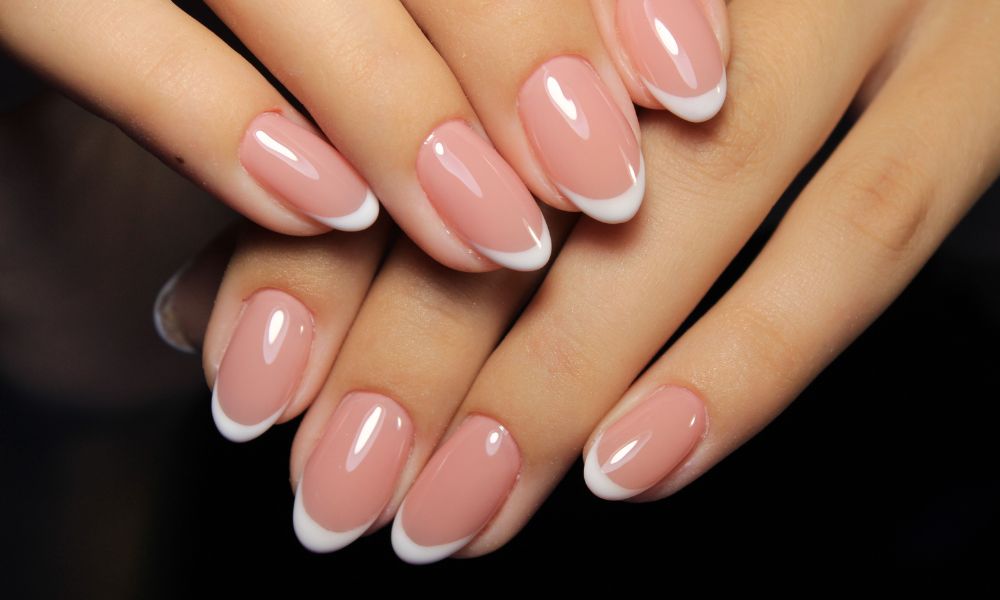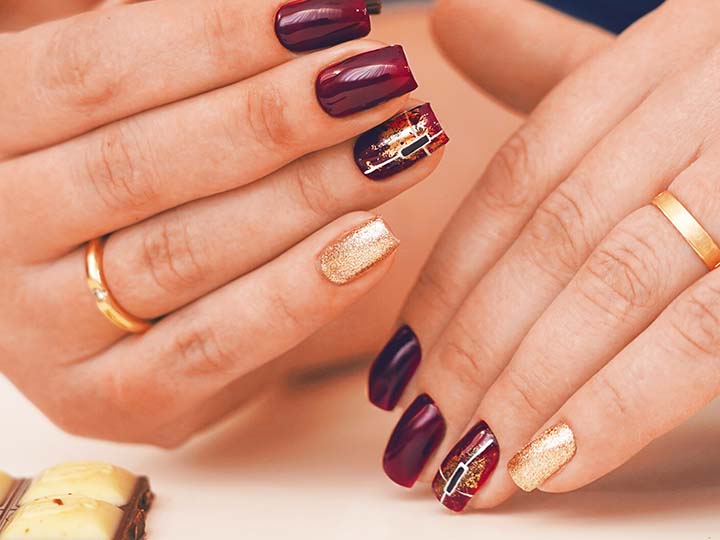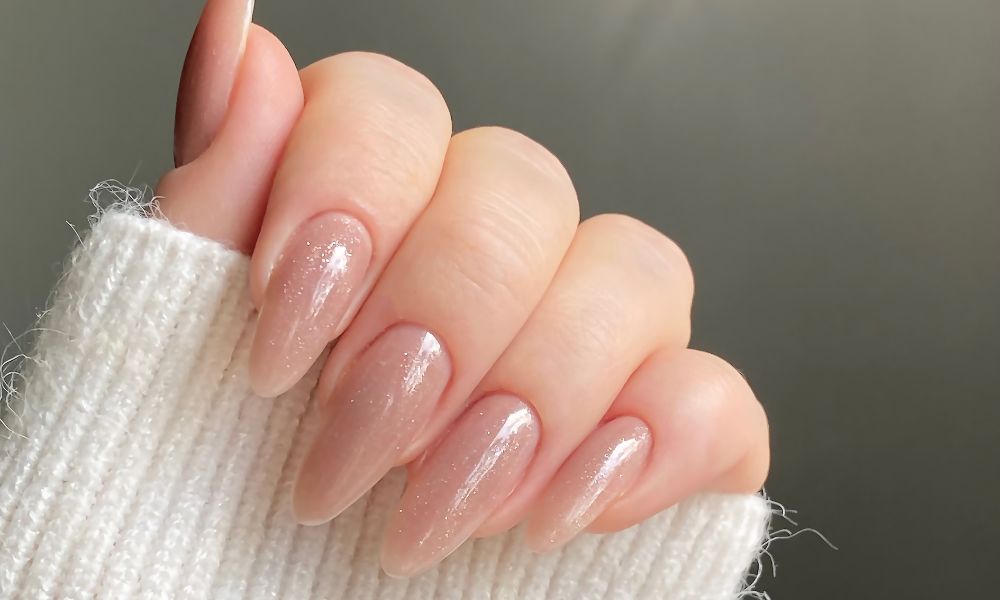The Sticky Truth
Have you ever run out of nail glue and thought, "Hey, maybe rhinestone glue will do the trick"? Both products are used in nail art and seem like they could be interchangeable. But the big question is: can you use rhinestone glue as nail glue for securing press-ons or nail tips?
While rhinestone glue is incredibly strong for adhering gems and decorations to your nails, it’s not always formulated the same way as regular nail glue. In this guide, we’ll break down whether rhinestone glue is a good alternative to nail glue, how it works, and whether you should consider using it for your next manicure.
What Is Rhinestone Glue?
Rhinestone glue is a special adhesive designed to attach gems, stones, and other decorations to your nails. It’s usually thicker than regular nail glue and is formulated to secure small, intricate embellishments without damaging your natural or artificial nails.
Key Features of Rhinestone Glue:
- Thick consistency: Helps hold heavier decorations like gems or rhinestones in place.
- Strong bond: Provides a reliable hold to prevent gems from falling off, even with daily wear.
- Flexible: Allows for movement without breaking the bond.
- UV-cured or air-dried: Some rhinestone glues require curing under a UV/LED lamp, while others air-dry.
Can You Use Rhinestone Glue as Nail Glue?
Technically, you can use rhinestone glue in place of nail glue, but it’s not the best option for attaching press-on nails or nail tips. Here’s why:
1. Different Formulation
- Rhinestone glue is designed to hold small, lightweight gems, not entire nails. Its formula is usually thicker, which can make applying press-on nails tricky. It may also not spread as easily as nail glue, which is formulated specifically to bond to both your natural nail and artificial nails.
2. Longer Drying Time
- Rhinestone glue often has a longer drying or curing time than traditional nail glue. Some types even require curing under a UV or LED lamp, which adds extra steps to the process of applying press-ons.
3. Not as Durable for Full Nails
- While rhinestone glue provides a strong bond for small decorations, it’s not necessarily designed to handle the full weight and daily pressure placed on false nails. As a result, using it to glue on press-on nails may result in nails lifting or popping off sooner than you’d like.
In short, rhinestone glue isn’t the ideal choice for attaching false nails. While it’s excellent for securing nail art, it doesn’t offer the same durability and ease of use as regular nail glue when it comes to larger, heavier items like nail tips or press-ons.
How to Use Rhinestone Glue for Nail Art
Though rhinestone glue may not be the best option for attaching full nails, it’s perfect for creating beautiful nail designs. If you want to add some sparkle to your manicure, here’s how to use rhinestone glue effectively:
1. Prep Your Nails
- Start by cleaning your nails with a non-oily nail polish remover to remove any dirt or residue. This ensures the rhinestone glue adheres properly to your nails.
2. Apply a Base Coat
- Apply a base coat or colored nail polish and let it dry completely before you apply any rhinestone glue.
3. Apply the Rhinestone Glue
- Use a small brush or the applicator that comes with the rhinestone glue to apply a tiny dot of glue where you want to place the rhinestones. Make sure to apply just enough glue to cover the base of the stone without excess.
4. Place the Rhinestones
- Use a pair of tweezers or a rhinestone picker to place each gem carefully onto the glue. Press it down gently to ensure it adheres properly.
5. Cure the Glue
- If you’re using UV-cured rhinestone glue, place your nails under a UV or LED lamp for the recommended amount of time. If your glue is air-dried, let it sit for a few minutes until fully dry.
6. Seal with a Top Coat
- For extra protection, apply a top coat around the rhinestones (but not over them, as this can dull their shine). This helps secure them and prevent them from falling off.
Differences Between Rhinestone Glue and Nail Glue
To better understand why rhinestone glue isn’t the best substitute for nail glue, here’s a quick breakdown of the key differences:
|
Feature |
Rhinestone Glue |
Nail Glue |
|
Consistency |
Thick, tacky |
Thin, liquid-like |
|
Drying Time |
Longer; often requires UV curing |
Quick-drying (within seconds) |
|
Best For |
Attaching small nail art decorations |
Securing press-ons, acrylics, or nail tips |
|
Durability |
Strong for small items, less for full nails |
Strong, durable for large surfaces |
|
Flexibility |
Slight flexibility to prevent stone loss |
Hard bond, less flexible |
Alternatives to Rhinestone Glue for Press-On Nails
If you’ve run out of nail glue and need an alternative, there are better options than rhinestone glue for attaching press-on nails or nail tips:
1. Nail Glue
- Traditional nail glue is the best option for applying false nails. It’s thin, quick-drying, and specifically formulated to provide a strong bond that can withstand daily wear and tear.
2. Double-Sided Nail Tape
- Sticky tabs or double-sided nail tape are excellent alternatives for securing press-on nails. They’re easy to apply, mess-free, and gentle on your natural nails. While they don’t last as long as nail glue, they offer a good temporary solution.
3. UV Gel
- UV gel can be used as an adhesive for press-on nails if you have a UV or LED lamp. It provides a strong, flexible bond and can keep your nails in place for up to two weeks.
Final Thoughts: Should You Use Rhinestone Glue as Nail Glue?
While rhinestone glue is fantastic for securing nail art and embellishments, it’s not the best option for applying full press-on nails or nail tips. If you’re out of nail glue, opt for alternatives like double-sided nail tape or UV gel for a more secure and long-lasting bond. Rhinestone glue is designed for smaller, lighter applications, so sticking with regular nail glue will give you the durability and strength needed for a flawless manicure.
Ready for a beauty upgrade? Unlock the power of pure, luxurious cosmetics with Mersi!
FAQs
- Can you use rhinestone glue as nail glue?
While you can use rhinestone glue in an emergency, it’s not ideal for securing false nails or nail tips. Rhinestone glue is thicker and slower-drying, making it less suitable for bonding large surfaces like full nails.
- What’s the difference between rhinestone glue and nail glue?
Rhinestone glue is designed for attaching small nail decorations and has a thicker consistency, while nail glue is thinner and formulated to bond larger surfaces like press-on nails or acrylic tips.
- Is rhinestone glue strong enough for full nails?
No, rhinestone glue isn’t typically strong enough to hold full nails or nail tips in place for extended periods. It’s best used for small embellishments rather than securing entire nails.
- Can I use rhinestone glue with a UV lamp?
Yes, many rhinestone glues require curing under a UV or LED lamp to harden fully. This creates a strong, durable bond for attaching small decorations like gems or rhinestones.
- What are better alternatives to rhinestone glue for applying nails?
The best alternatives to rhinestone glue for applying full nails are traditional nail glue, double-sided nail tape, or UV gel.





Leave a comment
This site is protected by hCaptcha and the hCaptcha Privacy Policy and Terms of Service apply.